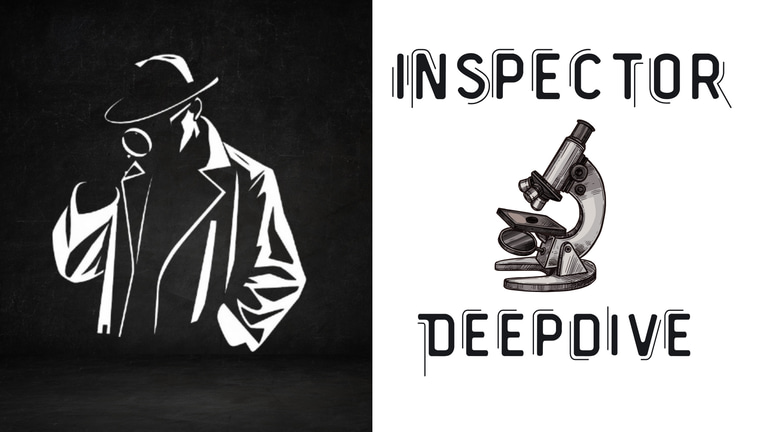
Zinc: Essential for Immunity, Growth, and Overall Health

Zinc: Essential for Immunity, Growth, and Overall Health
What zinc is
Zinc: an essential trace mineral required for hundreds of enzymatic reactions and many zinc-dependent proteins; critical for immune function, wound healing, DNA and protein synthesis, cell division, growth, and epithelial barrier integrity.
What zinc does in the body
Immune function: supports T- and B-cell activity and innate defenses.
Enzyme cofactor: required for numerous enzymes involved in DNA and protein synthesis.
Wound healing: aids tissue repair and keratinocyte function.
Sensory function: maintains taste and smell.
Hormone and reproductive health: contributes to testosterone production and fertility.
Inflammation & antioxidant defense: modulates inflammatory responses and supports antioxidant systems.
Top food sources of zinc
Oysters: very high zinc content.
Red meat: beef, lamb, and liver are rich sources.
Shellfish: crab, lobster, shrimp.
Seeds and nuts: pumpkin seeds, cashews.
Legumes: chickpeas, lentils (lower bioavailability due to phytates).
Dairy & eggs: yogurt, cheese, eggs.
Fortified foods: many breakfast cereals and some plant milks.
Daily recommended intake (RDA)
Adult men: 11 mg/day.
Adult women: 8 mg/day.
Pregnancy: 11 mg/day (adolescent pregnancy slightly higher).
Lactation: 12 mg/day.
Tolerable upper intake level (adults): 40 mg/day (total from food, supplements, and medications).
How zinc is absorbed and factors that influence it
Absorption site: primarily in the duodenum and jejunum.
Meal composition: animal protein enhances absorption; phytates in grains, legumes, and seeds reduce absorption.
Preparation methods: soaking, sprouting, fermenting, and cooking can lower phytates and improve bioavailability.
Supplement form: chelated and soluble forms generally absorb better than insoluble salts.
Drug/mineral competition: high doses of iron or calcium taken simultaneously can reduce zinc uptake.
Common supplement forms and absorption
Zinc citrate: well absorbed, gentle on the stomach.
Zinc picolinate: chelated form; excellent absorption.
Zinc gluconate: moderate absorption; commonly used in lozenges.
Zinc acetate: moderate absorption; used in some cold remedies.
Zinc sulfate: lower absorption; may cause gastrointestinal upset.
Zinc oxide: very low oral absorption; primarily used topically.
Typical supplement doses and safety guidelines
General support: 15–30 mg elemental zinc/day.
Short-term therapeutic use: some protocols use higher doses (up to 75 mg/day) for brief periods under medical supervision.
Chronic safety limit: avoid long-term total intakes above 40 mg/day unless supervised by a clinician.
Adverse effects of excess: nausea, metallic taste, vomiting, reduced HDL, and with prolonged high intake copper deficiency and neurologic issues.
Drug and nutrient interactions
Antibiotics (tetracyclines, fluoroquinolones): zinc can reduce antibiotic absorption separate dosing by at least 2 hours.
Penicillamine: zinc may interfere separate dosing by ~1 hour.
Iron & calcium supplements: compete for absorption space doses by 2–4 hours.
Proton pump inhibitors (PPIs): long-term use may decrease zinc absorption.
Who may benefit from supplementation
Vegetarians/vegans: lower bioavailability from plant-based diets.
Older adults: reduced intake and absorption.
People with GI disorders or post-bariatric surgery: malabsorption risk.
Athletes: higher losses via sweat.
Pregnant or lactating people: increased needs if diet is inadequate.
Diagnosed deficiency: confirmed by clinician assessment and testing.
Signs of adequate zinc status
Good wound healing: timely tissue repair.
Normal taste & smell: intact sensory function.
Healthy skin and hair: minimal dermatitis or hair loss.
Appropriate growth: normal growth in children and steady energy/appetite.
Symptoms of zinc deficiency
Frequent infections: recurrent or prolonged illnesses.
Delayed wound healing: slow tissue repair.
Hair thinning/loss: noticeable shedding or thinning.
Dermatitis: perioral, acral, or genital rashes.
Loss of appetite & weight loss: decreased intake and weight.
Impaired taste & smell: diminished sensory perception.
Growth retardation (children) & fertility issues (adults).
Correcting deficiency
Mild deficiency: clinical improvement often begins within 2–4 weeks after dietary support or supplementation.
Severe/chronic deficiency: may need 3–6 months of supervised treatment, especially with malabsorption.
Practical tips for taking zinc
With food: take zinc with a meal to reduce nausea.
Split doses: for higher daily totals, split into two doses (e.g., 15 mg twice daily).
Space competing minerals: avoid taking zinc with high-dose iron or calcium separate by 2–4 hours.
Cold symptom use: start lozenges within 24 hours of symptom onset if using them; follow product dosing and avoid intranasal zinc products.
Track total intake: include dietary zinc when calculating daily totals to avoid excess.
Lifestyle and dietary factors that increase zinc needs
Increased needs: chronic stress, heavy alcohol use, smoking, intense exercise, poor gut health, and diets high in unprocessed grains/legumes (high phytate) can increase requirements or reduce absorption.
Simple food prep fixes: soaking, sprouting, and fermenting grains/legumes improve zinc bioavailability.
Cooking and processing effects
Boiling: can leach zinc into cooking water minimize water use and reuse cooking liquid when possible.
Roasting/steaming/grilling: better preserve zinc compared with long boiling.
Fortified foods: useful for people on plant-based diets to meet needs.
Common misconceptions
“Zinc prevents all colds”: evidence shows modest benefit in some circumstances (early use, certain lozenges) but it is not universally preventive.
“More zinc is better”: excess zinc causes harm, notably copper deficiency.
“All zinc supplements are identical”: formulation and elemental zinc content affect absorption and tolerability.
Lessons from the COVID-19 Era
Zinc & antiviral activity: laboratory data showed antiviral potential and some clinical trials explored zinc in COVID-related contexts; results were inconsistent. Correcting deficiency supports immune resilience but zinc is not a substitute for vaccines or proven treatments.
How to track intake and assess status
Diet tracking: use nutrition databases or tracking tools to estimate zinc intake.
Symptom monitoring: watch for frequent infections, poor healing, or taste/smell changes.
Laboratory testing: serum/plasma zinc tests exist but are influenced by inflammation and timing interpret in clinical context.
Final takeaways
Zinc: essential for immunity, healing, growth, and metabolism. Prioritize diverse dietary sources (oysters, red meat, shellfish, seeds, legumes, dairy, fortified foods). Supplement when at-risk or deficient, choose well-absorbed forms, check elemental zinc content, and avoid chronic intakes above 40 mg/day unless under medical supervision.
Frequently asked questions (FAQ)
Can zinc shorten a cold? When started early, certain lozenges have shortened duration by about 1–2 days in some studies; results vary by formulation and dose.
Is daily zinc safe? Typical supplemental doses (15–30 mg/day) are safe for most adults; avoid exceeding 40 mg/day total long-term without medical advice.
Will zinc restore taste or smell? If caused by zinc deficiency, restoring zinc often improves these senses; if sudden unexplained loss occurs, seek medical evaluation.
How should I take zinc with medications? Check interactions (notably antibiotics and penicillamine) and space dosing per clinician or pharmacist guidance.
info@inspectordeepdive.com
© 2025 food.InspectorDeepDive.com. All rights reserved. Content may not be copied or republished without permission.
This article is for informational purposes only. InspectorDeepDive.com does not provide medical advice. Always consult a licensed healthcare provider before making dietary or health decisions.
